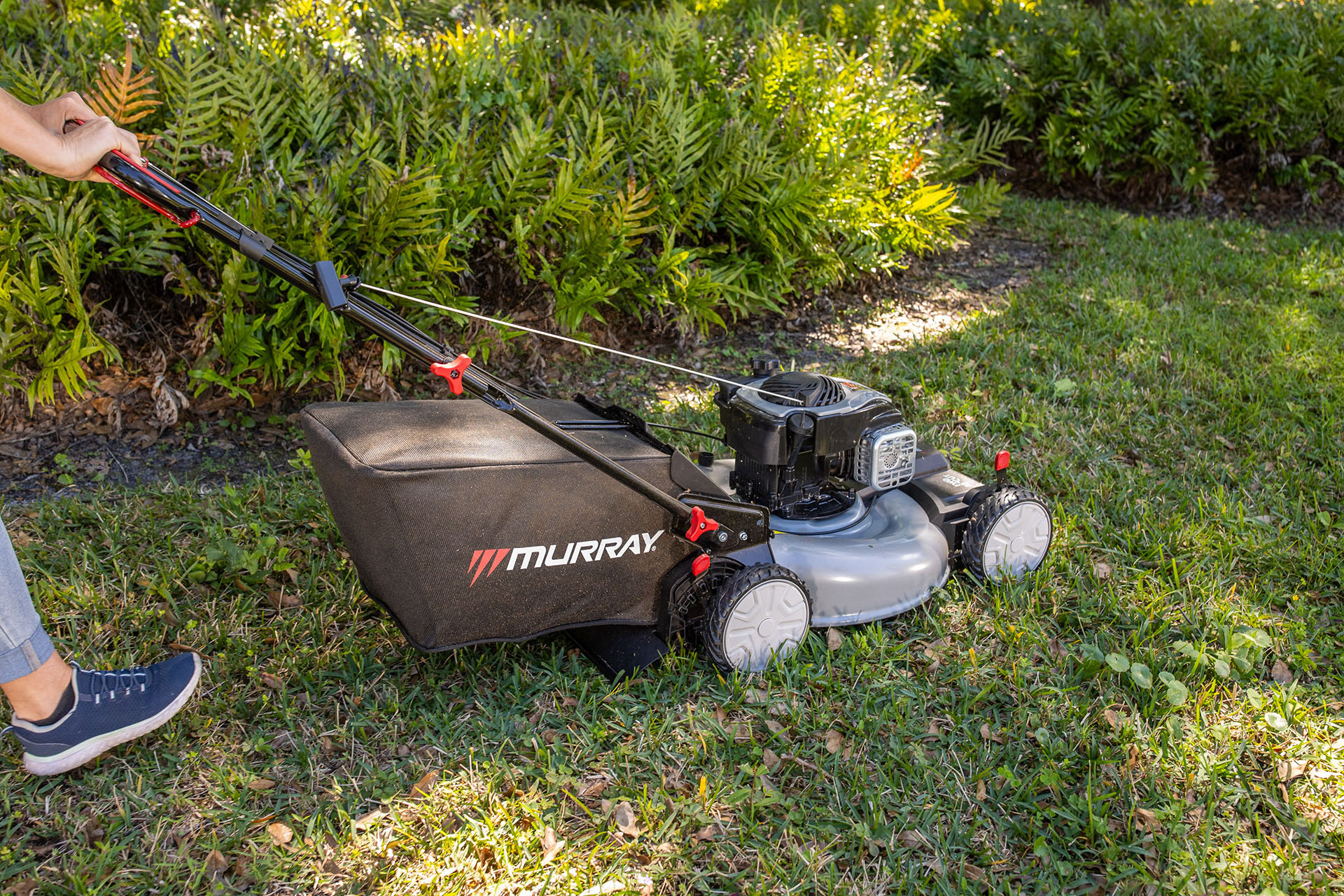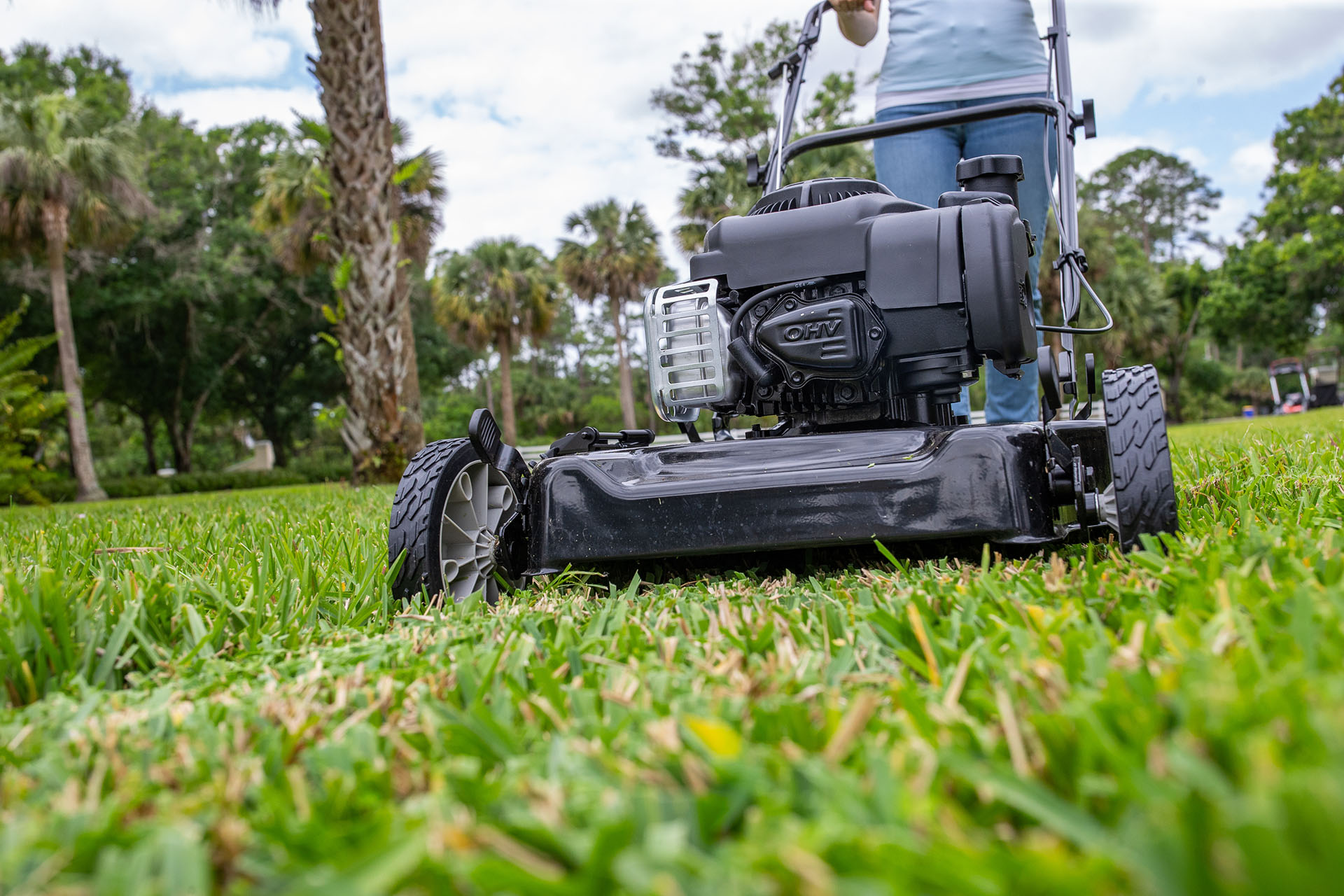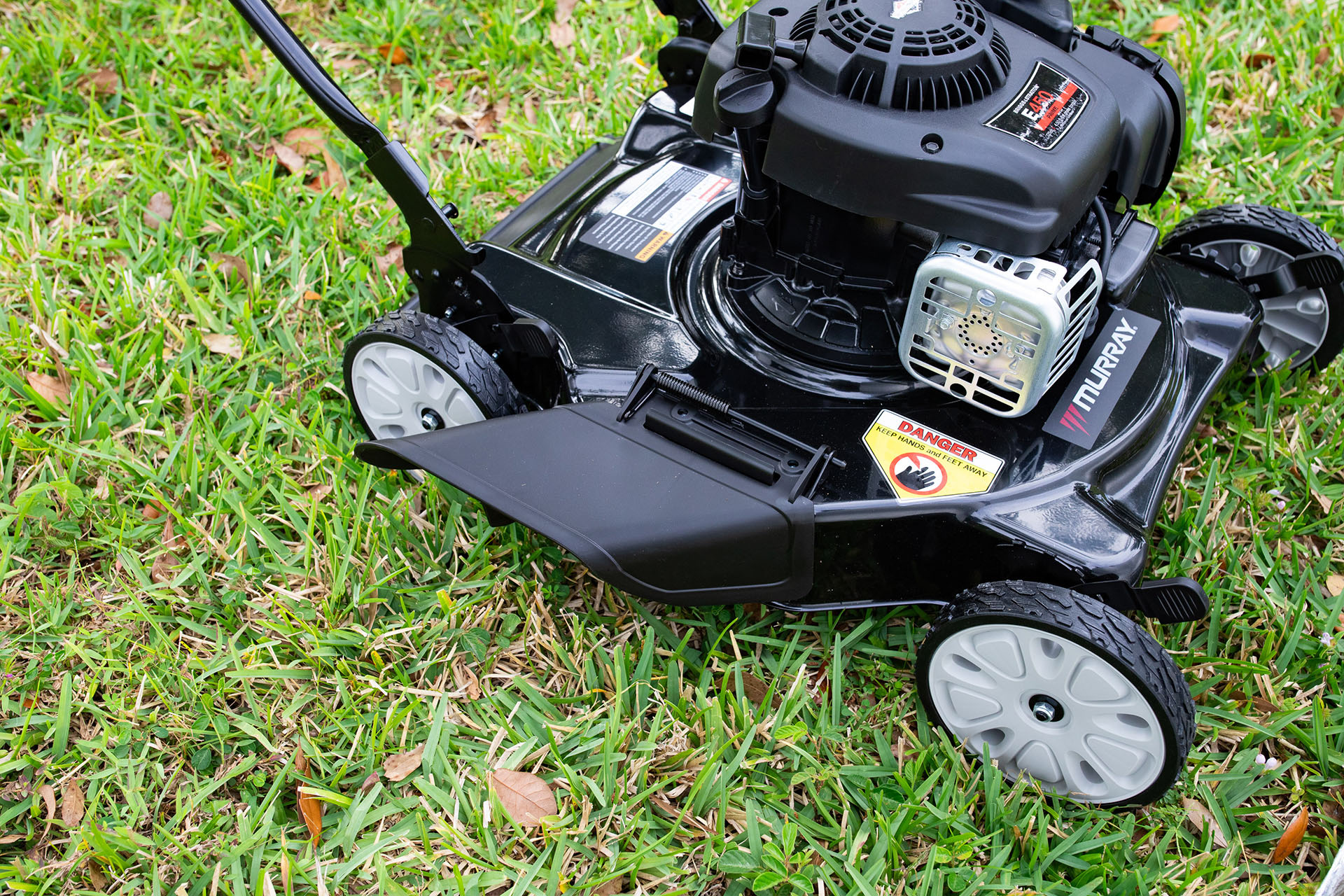Self-Propelled vs. Push Mower: What Should I Buy?
Choosing the right lawn mower may seem simple, but it can have a significant impact on your lawn – and your weekend! If you're shopping for a new lawn mower, one of the first decisions you’ll face is whether to go with a self-propelled mower or a traditional push mower.
While both lawn mowers get the job done, they operate differently and suit different types of yards. Push lawn mowers rely on your strength to move them forward, while self-propelled mowers use a drive system to assist movement, reducing physical effort. The best choice for you depends on several factors, including the size of your yard, the slope and type of terrain, your budget and how much labor you're willing to put in. In this guide, we'll walk through the pros and cons of each so you can find the mower that fits your lawn and your lifestyle.
What Is a Self-Propelled Mower and How Does It Work?
Self-propelled lawn mowers make mowing easier by doing the hard work for you. Instead of pushing it across the yard, the mower uses a built-in drive system to power the wheels – you simply walk behind and steer. It’s a great option if you want to reduce effort, especially on larger lawns or areas with hills and rough spots.
Many self-propelled models offer variable speed control, allowing you to adjust the pace of the mower. And while you’re still in control of where it goes, the propulsion system keeps things moving smoothly without the extra push.
You’ll typically see three types of drive systems:
- Front-Wheel Drive (FWD): Easy to turn and great for flat, open yards.
- Rear-Wheel Drive (RWD): Offers better traction on slopes and uneven ground.
- All-Wheel Drive (AWD): Delivers top performance on challenging terrain with plenty of grip and control.
If you’re mowing a medium or large yard – or just want to make the job less physically demanding – a self-propelled mower is a reliable, time-saving upgrade.

Advantages of Self-Propelled Lawn Mowers
Self-propelled mowers are a perfect blend of power and convenience, helping you cut down on physical effort without sacrificing performance. Here’s what makes them stand out:
- Less Physical Effort: The mower propels itself – you simply guide it. Perfect for longer sessions or rugged terrain
- Faster Mowing: You can cover more ground in less time, especially with adjustable speed settings.
- Better for Slopes and Bumpy Yards: Rear- and all-wheel drive self-propelled models offer the traction you need.
- Upgraded Features: Many self-propelled lawn mowers come with extras like electric start, mulching capabilities and smart speed controls.
Whether you're mowing a spacious yard or just looking to make lawn care a little easier, a self-propelled mower offers a smooth, efficient grass-cutting experience.
What Is a Push Mower and How Does It Work?
A push mower is a classic, no-fuss tool that runs entirely on your effort. As you push it forward, the wheels spin – meaning no drive system and no added complexity. Push mowers are a simple and effective way to keep your lawn in shape, especially if you don’t mind a bit of a workout while mowing.
Push mowers are available in gas and electric lawn mower models, giving you flexibility depending on your lawn care goals. Push lawn mowers are generally lightweight, easy to maneuver and require less maintenance than self-propelled models. And because push mowers give you complete control of the pace, they’re great for trimming around flower beds, trees and tight landscaping spaces.
Best of all, push mowers are perfect for small to medium-sized lawns with flat terrain – and for homeowners who prefer a more hands-on, budget-friendly approach to mowing.
Advantages of Push Mowers
Push mowers are a simple, dependable choice with plenty of practical benefits:
- Budget-Friendly: Affordable to buy and cheaper to maintain over time.
- Lightweight & Easy to Handle: No heavy transmission means easier lifting and turning.
- Low Maintenance: Fewer parts means fewer things to service or replace.
- Eco-Conscious Options: Electric and manual models offer clean, quiet mowing.
- Precise Control: Great for tight corners, detail work and slower, steadier cuts.
- Perfect for Small Yards: Especially efficient on flat, obstacle-free lawns.
If you’re looking for a reliable, straightforward mower that’s easy to use and budget-friendly, a push mower might be just what your lawn needs.

Choosing the Right Mower Type
Now that you know the advantages of both types of walk-behind lawn mowers, it's time to pick the right mower for your yard. Both self-propelled and push lawn mowers have lots of strengths, so it's key to consider your lawn size, terrain and personal comfort level when making a final decision.
To help you compare at a glance, here’s a side-by-side breakdown of how each type stacks up:
| Factor | Self-Propelled Mower | Push Mower |
|---|---|---|
| Lawn Type | Best for medium to large yards | Ideal for small to medium-sized lawns |
| Terrain & Slope | Handles hills and uneven ground with ease | Best on flat, even terrain |
| Physical Effort | Minimal effort – mower moves on its own | Requires full manual pushing |
| Speed & Efficiency | Faster mowing with variable speed options | Slower; depends on user’s pace |
| Cost | Higher upfront cost | More budget-friendly |
| Maintenance | More components to maintain (drive system, cables, belts) | Simpler design, easier and cheaper to maintain |
| Environmental Impact | Gas models emit more; electric options available | Gas models emit more; electric options available; manual reel options available |
| Best For | Larger lawns, uneven terrain and lower effort | Small lawns, flat ground and low-maintenance simplicity |

Self-Propelled Mower and Push Mower Options
Whether you're aiming for maximum convenience or sticking to a tighter budget, there’s no shortage of options when it comes to finding the right mower. Both self-propelled and push mowers come in a variety of styles to match different yard sizes, terrains and preferences.
Push mowers come in three main types:
- Gas-powered mowers deliver solid cutting power and are ideal for thicker grass but require regular maintenance.
- Electric push mowers (corded or battery-powered) are quieter, easier to maintain and better for the environment.
- Manual reel mowers are the most eco-friendly and affordable – and best suited for small, well-kept lawns.
Self-propelled mowers come in both gas and electric models. Depending on your yard’s terrain, you can choose front-wheel, rear-wheel or all-wheel drive for easier handling and better traction where you need it most.
What to Look For When Choosing a Mower
No matter which mower type you go with, keep these key features in mind:
- Cutting Width: A more expansive deck covers more ground quickly – helping you mow faster.
- Power Source:
- Gas offers more cutting strength
- Electric is quieter and lower-maintenance
- Manual is best for eco-conscious simplicity
- Mulching/Bagging Options: Some mowers come with 3-in-1 functionality – mulch, bag or side discharge.
- Durability: Look for a sturdy frame, solid wheels and trusted components to get the most out of your mower, season after season.
For small, flat yards, a push mower is usually more than enough. For larger, uneven terrain or when minimizing effort is key, a self-propelled mower with variable speed and rear- or all-wheel drive will give you maximum power and convenience.

Final Thoughts: Which Mower Should You Buy?
At the end of the day, both self-propelled and push mowers bring something valuable to the table – it just depends on what your lawn (and your lawn care routine!) looks like.
If you’re tackling a larger yard, uneven ground or just want to make mowing feel like less of a workout, a self-propelled mower is a great investment. On the other hand, if your lawn is smaller, mostly flat and you’re looking for a low-cost, low-maintenance option, a push mower could be the perfect fit.
Consider your yard's size, terrain, storage space and the amount of time and effort you're willing to spend on mowing. From there, the right mower will practically pick itself.
Shop Murray Mowers: Get it Done. Go Have Fun.
If you're looking for affordable and efficient lawn mowers, check out Murray Mowers. Found exclusively at Home Depot and built with powerful Briggs & Stratton engines, the Murray line includes push mowers, self-propelled mowers, riding lawn tractors and zero-turn mowers.
Frequently Asked Questions: Self-Propelled vs. Push Mowers
How long do self-propelled vs. push mowers last?
With regular maintenance, most push and self-propelled mowers last at least 8-10 years. Push mowers typically need less upkeep since they have fewer moving parts. Self-propelled models require a bit more attention – but when well cared for, they're built to last just as long.
Can I use a self-propelled mower without the self-propel function?
Yes, you can push a self-propelled mower without engaging the drive system – but it’s not the easiest task. These mowers are generally heavier than standard push models, and the internal drive components can add resistance when not in use. So while it's possible to mow without the self-propel feature turned on, expect more effort to get the job done.
Is a gas or electric mower better for self-propelled and push models?
It depends on your yard and preferences. Gas mowers are powerful and handle thick grass well – perfect for bigger lawns. Electric mowers (corded or battery) are quieter, cleaner and easier to maintain – ideal for small to medium spaces.
Do self-propelled mowers work well on thick or tall grass?
Absolutely. Gas-powered self-propelled mowers, especially those with rear- or all-wheel drive, offer the traction and cutting power needed to easily handle dense or overgrown grass.



